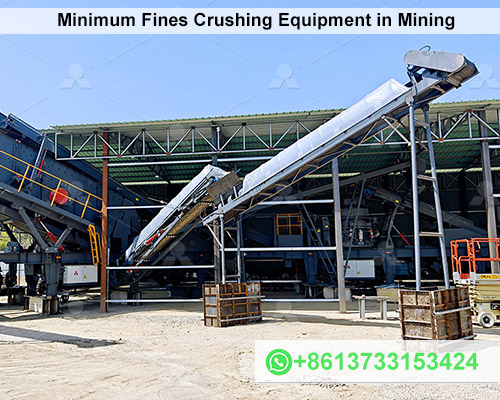Minimum Fines Crushing Equipment in Mining
The mining industry is constantly evolving, with an increasing focus on efficiency, environmental impact, and sustainable practices. One critical area that has garnered attention in recent years is the process of reducing the amount of fines generated during crushing operations. Fines, which are smaller particles produced as a byproduct of crushing, can be problematic for mining operations, often leading to inefficiencies and environmental concerns. As a result, minimum fines crushing equipment has emerged as an essential solution to these challenges, offering several advantages in modern mining practices.
Understanding Fines in Mining
Fines are the small, often undesired, particles that result from the crushing of raw materials in mining operations. While larger particles are typically used in further processing or sold as final products, fines tend to create complications. Excessive fines can reduce the efficiency of material handling, cause blockages in conveyors, and require additional processing to separate them from usable ore. Furthermore, fines are often not commercially viable on their own, leading to waste management issues.
The production of fines also has environmental implications. Disposal of fines can contribute to pollution and land degradation. Additionally, the process of separating and handling fines can consume significant amounts of energy, increasing the overall carbon footprint of mining operations. Hence, reducing the amount of fines generated is not only a matter of operational efficiency but also a step towards more sustainable mining practices.

The Role of Minimum Fines Crushing Equipment
To address the issue of excessive fines, many mining companies are turning to minimum fines crushing equipment. This equipment is specifically designed to reduce the amount of fines produced during the crushing process, while still achieving the desired size reduction of raw materials.
The key principle behind minimum fines crushing equipment is the control of the crushing process to minimize the creation of fine particles. This is often achieved through innovative crusher designs, optimized crushing chamber configurations, and advanced control systems. The aim is to produce uniform particle sizes that are suitable for further processing, without generating excessive amounts of fines.
Types of Minimum Fines Crushing Equipment
Several types of crushing equipment are designed to minimize fines in mining operations:
- Roll Crusher: Roll crusher use compression to crush materials between two rotating rolls. By controlling the roll speed and gap, operators can achieve precise size reduction with minimal fines. Roll crusher is especially effective for softer materials and are commonly used in coal mining.
- Jaw Crusher: Jaw crusher utilize a mechanical pressure system to crush large rocks into smaller pieces. By optimizing the feed rate and adjusting the crushing chamber, jaw crusher can reduce the amount of fines generated. These crusher is often used in primary crushing stages for hard rock mining.
- Impact Crusher: Impact crusher use high-speed impact forces to break materials. While they are known for producing finer particles, modern impact crusher can be configured to reduce fines production by controlling the rotor speed and adjusting the impact zones.
- Cone Crusher: Cone crusher is designed for secondary and tertiary crushing stages. By adjusting the settings of the cone and ensuring a steady feed of material, operators can limit fines generation. These crusher is often favored for their ability to handle abrasive materials like granite and basalt.
- High-Pressure Grinding Rolls (HPGR): HPGR technology is a highly energy-efficient solution that has gained popularity in mining. By applying high pressure to compress the material, HPGR can reduce ore to a fine product while minimizing the amount of ultra-fine particles produced.
Benefits of Minimum Fines Crushing Equipment
The use of minimum fines crushing equipment offers several benefits to mining operations:
- Increased Efficiency: By minimizing the production of fines, mining operations can reduce the need for additional processing and handling of small particles. This leads to higher throughput rates and reduced operational costs.
- Energy Savings: The reduction of fines helps decrease energy consumption in downstream processes, such as grinding and classification, as less energy is required to process larger, uniform particles.
- Enhanced Sustainability: Reducing fines production aligns with the growing focus on sustainability in mining. Less waste is generated, and energy consumption is reduced, leading to a smaller environmental footprint. This can also help mining companies meet regulatory requirements related to waste management and emissions.
- Improved Product Quality: By controlling the crushing process and minimizing fines, the final product is more consistent in size and quality, improving the overall value of the mined materials.
The development and implementation of minimum fines crushing equipment represent a significant step forward in the mining industry’s pursuit of greater efficiency and sustainability. By reducing the generation of fines, mining operations can optimize material handling, lower energy consumption, and reduce their environmental impact. As the industry continues to evolve, the role of innovative crushing equipment in minimizing fines will only grow in importance, paving the way for more sustainable mining practices.








